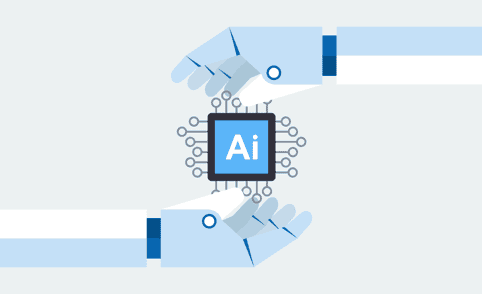Business Intelligence software (BI) 2.0 capabilities (predictive, real-time, social, and big data analytics) are being used more than ever. Organizations are adopting them as they provide significant opportunity to gain a competitive advantage. If the business is not demanding these capabilities now, they will soon. It is thus recommended to plan for BI 2.0 capabilities now before your organization falls behind.
Business Intelligence vs. Business Analytics
Before getting into the discussion of BI capabilities, let’s compare BI and Business Analytics (BA) to clearly define what BI is.
1. Business Intelligence Software
In its infancy, BI referred to the broad range of tools and techniques that could be used to extract operational or strategic insights from organizational data. Since maturing and rapidly expanding as a practice in the last 10+ years, the term “BI” has retained its broad colloquial meaning while sprouting multiple sub-practices.
- Business Intelligence software is concerned with looking at present and historical data.
- Use this data to create reports and dashboards to inform a wide variety of information consumers and decision-makers of the past and current state of affairs.
- Almost all organizations, regardless of size and maturity, use some level of BI, even if it’s just very basic reporting.
2. Business Analytics
BA on the other hand is a much newer discipline with a more specific definition. While BA is often referred to as being under the BI umbrella, we will use the two to describe what we see as being a key differentiator in the use of enterprise data, described below.
- Business Analytics on the other hand is a forward-facing use of data, concerned with the present to the future.
- Analytics uses data to both describe the present and more importantly predict the future, enabling real-time and strategic business decisions.
- Although adoption is rapidly increasing, many organizations still do not utilize any advanced analytics in their workflow.
4 BI Capabilities
The major capabilities of BI 2.0 can be divided into 4 categories: data presentation, data analysis, data ingestion, and data foundation.
1. Data Presentation 📄
The data presentation layer delivers BI content to information consumers. Delivery ranges from traditional reporting/dashboards to data visualization and self-service BI. Delivery channels include applications, web browsers, mobile devices, and/or enterprise portals.
Excel Services
Excel can be used to extract BI data and further manipulate and analyze data with familiar Excel functionality.
Alerts
The CEO or VPs can be alerted when critical measures reach a certain threshold.
Mobile BI
Field service representatives can manage and analyze customer information 24/7.
Geospatial Analysis
Sales directors can plot the most profitable customers on a map to invest resources in only the most profitable locations.
Data Visualization/Discovery
A heat map can be used to identify products with a high profit margin and low shelf life.
Self-Service BI
A sales representative can run customized reports on her/his own set of clients without IT assistance.
2. Data Analysis 🔍
Information workers or power users can use the data analysis layer to perform more complex analyses such as mashing up data, slicing and dicing data, creating predictive models, and performing advanced analytics to uncover insights that are not apparent from reports or dashboards.
Predictive Analytics
Collect millions of customer and product observations to recommend products or services based on location.
Social Analytics
Identify frustrated customers via social media and service them in a timely fashion to keep them satisfied.
Sentiment Analysis
Identify the sentiment toward your brand by analyzing social media feeds and develop strategies to deal with competition.
Big Data Analytics
Collect millions of customer and product observations to recommend products or services based on location.
3. Data Ingestion 💻
Source data is extracted, transformed, integrated, and loaded into the data foundation layer by the data ingestion layer. This layer has to be able to connect to various data sources and be able to cleanse and enhance data in case of poor data quality.
Enterprise Application Integration
Share more data across the enterprise by linking different applications to provide data into the data warehouse.
4. Data Foundation 📊
The data foundation layer provides the foundations for data analysis and data presentation. Data is modeled and structured in different repositories to enable efficiency retrievals. The data is also organized differently to suit specific analytic purposes.
Real-Time Analytics
Develop real-time reports or dashboards that provide up-to-the-second metric updates.
Data Virtualization
Quickly create prototypes of data sets for business users without physically merging the data sets.
NoSQL Database
Store extremely large data sets or office documentation at a lower cost.
From Excel to Power BI
Check out the short video below about understanding Power BI and Excel:
5 Steps to BI planning
In planning for Business Intelligent software 2.0 capabilities, we recommend considering the following 5 steps:
🎯 Determine target state BI capabilities
🖥️ Assess current state BI capabilities
☑️ Define improvement initiatives to close gaps
📝 Track project progress and monitor performance
💬 Communicate and promote the BI tool strategy
Let’s map your Business Intelligence software journey together!
Business Intelligence software is no longer a luxury or niche. Organizations of every size and across all industries are taking advantage of the benefits of BI. Having an appetite for BI does not mean that the initiative will be an automatic success. It is imperative that organizations take the time to select and implement a BI suite that aligns with business goals and fosters end-user adoption.
Our team of BI experts will be happy to help you start your BI journey. Contact us today. We will be happy to discuss how we can help you!
Tags:
Insights & AutomationNovember 29, 2016
.png?width=821&name=4%20Capabilities%20of%20BI%20(1).png)
.png?width=889&name=Shipping%20%26%20Inventory%20Reporting%20-%20Power%20BI%20Case%20study%20(5).png)



Comments